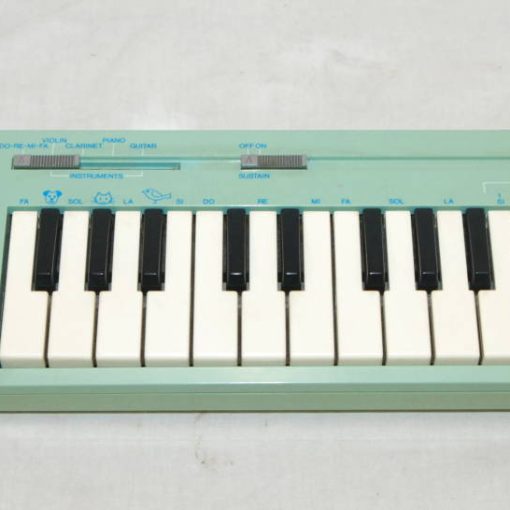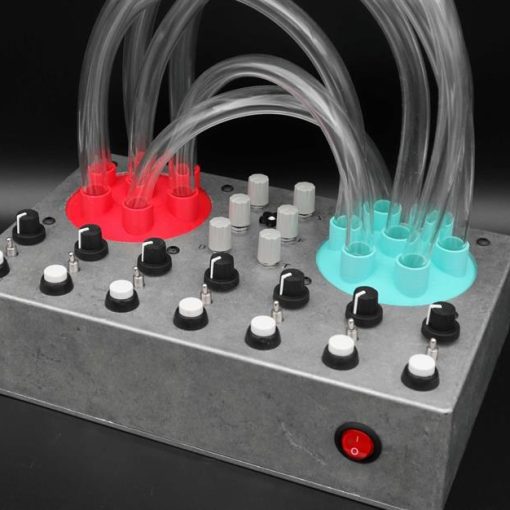Introduction – Part One: Type – Part Two: Budget – Part Three: Features – Part Four: Extras – Part Five: Manufacturers
Once you have a fairly good idea of what type of keyboard instrument you want to buy, and what your budget is, you can start to look at what features you want.
You get what you pay for. As well as the manufacturer name itself (some brands sell at a premium), your price will get you a certain quality of workmanship and generally proportional amount of features. Certain features will only be found on more expensive instruments.
If your feature list outstrips your budget, you may have to sacrifice some features, haggle with the store owner, buy an older model or buy second-hand.
Acoustic Pianos
Every acoustic piano is unique. In my opinion, if you’re spending large amounts of money on an acoustic instrument, you need to try some out.
Your choice of upright or various sizes of grand piano may be more to do with cost and space considerations than the sound quality.
A good upright piano sounds wonderful, though different to a grand piano.
I’d suggest you read a guide such as the excellent online resource The Blue Book of Pianos which will give much better advice than I ever could.
An acoustic piano is an investment, so care should be taken in the choice.
Digital Pianos / Home Keyboards / Synthesizers / Workstations
Here’s a definition list of some common features:
- Keyboard range: How many notes the keyboard has, often specified as the total number of black and white notes. Divide this number by 12 to get the whole number of octaves.
- Keyboard type: Can be weighted, graded weighted, or synth.
- Piano sound: The acoustic piano sounds simulated by a digital instrument.
- Other sounds: The other built-in synthesized sounds available.
- Polyphony: How many notes (samples) the instrument can sound at once before no more can be played, or notes are cut off.
- Touch sensitivity: Whether pressing a key harder or softer produces a change in the volume or other attributes of a sound.
- Aftertouch: Whether additional pressure on a key after it is first pressed down affects the sounds being played.
- Effects: Many and varied, including reverb, echo, chorus, brilliance, and stereo panning.
- Sound programming: Whether properties of sounds (eg waveform data, attack/decay times, distortion, response to keypresses, modulation settings, etc) can be created/modified by the user
- Display: What sort of display a keyboard has for providing information to the user.
- Sequencing/recording: Whether performances can be recorded and played back. Whether multiple tracks can be recorded/edited.
- Additional controllers: Provide methods for controlling sound and performance other than the main keyboard, including pedals and wheels.
- Amplifier and speakers: What sound system is built-in, if any.
- Connectivity: Options for connecting to external equipment such as computers and sound systems.
And this table shows what features are commonly found on different types of instrument:
|
Digital Pianos |
Home Keyboards |
Synthesizer |
Workstation |
|
|
Keyboard range: |
88 notes standard, 76 notes acceptable |
61 notes standard, 49 notes acceptable |
Generally 49 or 61 notes, sometimes more or less |
61 notes minimum, 76 or 88 excellent |
|
Keyboard type: |
Must be weighted, can be graded (lower notes feel heavier), can be adjustable, check materials used |
Generally ‘synth’ plastic keys, very light |
Plastic keys, light, may be adjustable |
May be either synth or weighted keys |
|
Piano sound: |
May have several variations and altering effects. Check sample type. Modern keyboards simulate acoustic pianos better |
Generally adequate but lacks advanced samples used in digital pianos |
Often lacking |
Usually of high quality |
|
Other sounds: |
Most have standard keys, organs, strings, chorus, etc. May have many other available sounds. |
Good range of sounds |
Built in ready-made sounds may be limited |
Large range of sounds |
|
Polyphony: |
32 reasonable, 64 good, 96+ excellent |
Most modern have at least 16 notes, 32 good |
Some are monophonic. Many have high polyphony |
Higher the better, 64 or more. |
|
Touch sensitivity: |
Essential for a digital piano |
Very cheap don’t have, most do |
Essential |
Essential |
|
Aftertouch: |
Rarely built-in or required |
Rarely built-in |
More expensive built-in. Very useful |
More expensive built-in. Useful |
|
Effects: |
Generally basic sound modifications |
Generally basic sound modifications |
Good range of programmable effects |
Good range of effects |
|
Sound programming: |
Very rare |
Rare |
Amount of editing possibilities varies |
Amount of editing possibilities varies |
|
Display: |
Varies from LED to large LCDs that can display musical notation |
Varies from LED to large LCDs that can display musical notation |
Varies from LED to large LCDs that can display musical notation |
Usually larger screens for editing |
|
Sequencing/recording: |
Basic recording/playback fairly standard, sometimes more |
Some recording/playback possible |
Not usually built-in |
High level of sequencing/recording/playback control |
|
Additional controllers: |
2 or 3 pedals, not usually much else |
More expensive have sustain pedal, pitch bend wheel, sometimes more |
Sustain pedal, expression pedal, pitch bend, Modulation wheel, other data wheels |
2 or 3 pedals, pitch bend, modulation, data wheels |
|
Amplifier and speakers: |
Usually of high quality, some come without and need external speakers |
Small, lower quality speakers. Internal sounds often improve with external speakers |
Rarely built-in |
Usually of medium-high quality, additional speakers can be added. |
|
Connectivity: |
MIDI/USB, audio out |
MIDI/USB, audio out |
MIDI/USB, audio out |
MIDI/USB, audio out |
Features that generally add the most cost to an instrument are the style of keyboard and number of keys, polyphony, aftertouch, and sequencing capabilities.
Hopefully this part of the guide has given you a better idea of what features are available.
Read part four of the guide to see what extras you might want.
Introduction – Part One: Type – Part Two: Budget – Part Three: Features – Part Four: Extras – Part Five: Manufacturers




